ENG / GR
The question we asked ourselves at the beginning of this project was whether there can be architecture –at least in the way we know it- in times of economic crisis. Inspired by this reflection, we came up with an original title for our thesis that constitutes of a word play with the word “κρίση”<from the Ancient Greek word “κρίσις”, which in Greek has a double meaning, one for crisis (economic, social or political) and one for judgment. “Crisis Question” which is the title in direct translation, is used in terms of critical thinking.
So, we basically asked ourselves what is the role of architecture in the current Greek social and economic environment. What are the possible ways and tools that architecture can use in order to stand up to this situation? With this in mind, we tried to come up with alternative architectural proposals that could upgrade our city.
In the extended Athens area, we often find vacant lots among the densely built urban fabric. The challenge was if we could exploit these lots for public character uses. Although we chose as a case study the area of Exarchia, the interventions described below could also be realized in the extended area of the city center in spots with similar characteristics.
Exploring the area of Exarchia, plots that have “escaped” from intense building and “Polykatikia” (characteristics blocks of flats) may be identified. The subject of this Diploma Thesis was therefore to design ephemeral, cheap and flexible –in terms of use- structures that could accommodate numerous usages.
More specifically, we recommend three tools for the temporary utilization of the vacant land:
1. Digging
2. Building with scaffolding and
3. Hanging between sidewalls
We chose as a case study one of the listed plots* of Athens, which, due to a special legal status, remain empty. The main characteristics of the plot chosen are that it is found between two high sidewalls and there is a “vromousa”** tree standing in the middle.
For the plot in discussion, we designed four cheap, ephemeral and flexible proposals that are going to improve the neighborhoods’ quality of life. Also, the legal gap noticed, further supports the realistic and achievable nature of our proposal, since these “listed plots” are more likely to remain empty, at least as long as the economic crisis deepens.
The first structure is an amphitheater that can host performances, lectures, movie screenings and many more. The next structure is a public swimming pool open to the area’s residents but also to visitors. The third proposal consists of some hanging between sidewalls structures that could be used as galleries, recreation spaces, hostels or offices. The last proposal is a scaffold that could, depending on the needs, serve as studying areas for students, workshops, coffee shop, hostel, library or offices.
The primary material used for the structures is seaweed, among others like building timber, nylon and scaffolds. The selection of seaweed was based on its reproducible nature. It is a cheap and plentiful material. More importantly, in terms of structural behavior, seaweed is a durable material, non-toxic, insulating, fire-proof, light- and sound-absorbing.
In order to underline the realistic character of our proposal we have created a price list containing all the materials needed in order to construct each one of our structures. The price list can be found here.
Design Thesis / NTUA, 2015
students: George Papadimas, Christine Tzevelekou
supervisor: A.Kourkoulas, P.Tournikiotis
consultants: Manolis Manios
*Listed plot in terms of this project is a plot that has obvious traces of an old, low rise building and features a special legal status. The building that used to be there was a listed building due to some special architectural or historical interest and even though the building has collapsed, the status remains. The law permits only the reconstruction of the old building, something that is therefore expensive and its’ bureaucratic procedures might take long while at the same time, the estimated profit of use might be limited.
**Vromousa tree or vromokaridia (Ailanthus altissima) is a very commonly found species in the city center of Athens. It is a very resistant tree with minimum requirements for water, soil and light. Its high prevalence in the city center may be attributed to its resistance to the atmospheric and chemical pollution. (https://en.wikipedia.org/wiki/Ailanthus_altissima)
——————————————————————————————————————-
Η ερώτηση κρίσεως που τέθηκε στην έναρξη αυτής της εργασίας είναι εάν μπορεί να υπάρξει αρχιτεκτονική στην εποχή της κρίσης. Δηλαδή, ποιοί είναι οι τρόποι και τα εργαλεία που η αρχιτεκτονική μπορεί να ανταποκριθεί στα σημερινά δεδομένα.
Στο πλαίσιο αυτό, αναζητήθηκαν τρόποι αξιοποίησης και παράλληλα αναβάθμισης της πόλης των Αθηνών. Στον πυκνοδομημένο αστικό ιστό, ανάμεσα σε ψηλές μεσοτοιχίες, εντοπίστηκαν αρκετά κενά οικόπεδα. Ο προβληματισμός ήταν πώς μπορούμε να τα εκμεταλλευτούμε για χρήσεις δημοσίου χαρακτήρα.
Επιλέχθηκε η περιοχή των Εξαρχείων, παρότι οι επεμβάσεις που προτείνονται μπορεί να υλοποιηθούν και σε άλλες περιοχές του κέντρου με παρόμοια χαρακτηριστικά. Αντικείμενο της παρούσας διπλωματικής εργασίας αποτέλεσε λοιπόν ο σχεδιασμός εφήμερων και φτηνών κατασκευών που θα μπορούσαν να φιλοξενήσουν ευέλικτα προγράμματα χρήσεων.
Οι μέθοδοι προσωρινής αξιοποίησης των οικοπέδων που προτείνονται είναι :
– Σκάβοντας
– Χτίζοντας με σκαλωσιά
– Κρεμώντας από τις γειτονικές μεσοτοιχίες.
Επιλέχθηκε σαν περίπτωση μελέτης ένα από τα «διατηρητέα οικόπεδα»* τα οποία λόγω ενός νομικού κενού παραμένει κενό και αναξιοποίητο. Το οικόπεδο βρίσκεται ανάμεσα σε δύο ψηλές μεσοτοιχίες ενώ διαθέτει και μια βρωμούσα** ύψους 15 μέτρων.
Προτείνονται σε αυτό τέσσερις φθηνές, εφήμερες και ευέλικτες προτάσεις οι οποίες βελτιώνουν την ποιότητα ζωής των κατοίκων. Μάλιστα, το νομικό κενό που εντοπίστηκε κάνει τις προτάσεις πιο ρεαλιστικές και εφικτές, καθώς αξιοποιούν ένα κομμάτι γης που είναι καιρό ανεκμετάλλευτο και είναι πιθανό να παραμείνει κενό, τουλάχιστον για όσο η κρίση εξακολουθεί.
Η πρώτη είναι ένα αμφιθέατρο που μπορεί να φιλοξενήσει διαλέξεις, παραστάσεις, προβολές ή και θερινά μαθήματα του πολυτεχνείου. Η επόμενη πρόταση είναι μια δημοτική πισίνα ανοιχτή στους κατοίκους της περιοχής αλλά και σε επισκέπτες. Η τρίτη είναι κρεμαστοί όγκοι αναρτημένοι από τις διπλανές μεσοτοιχίες οι οποίοι θα φιλοξενούν χώρους αναψυχής, εκθέσεις, ξενώνα ή γραφεία. Η τελευταία πρόταση είναι μια σκαλωσιά που ανάλογα με τις ανάγκες έχει τη δυνατότητα να φιλοξενήσει καμαρίνια για τους φοιτητές, εργαστήρια, καφετέρια, ξενώνα, βιβλιοθήκη ή και χώρο γραφείων.
Το βασικό υλικό που χρησιμοποιήθηκε για τις κατασκευές είναι τα φύκια, μαζί με οικοδομική ξυλεία, σκαλωσιά και νάυλον.
Επιλέχθηκε σαν υλικό τα φύκια γιατί:
– είναι ένα φθηνό και άφθονο υλικό (συλλέγεται και πετάγεται)
– είναι ανεξάντλητο καθώς αναπαράγεται φυσικά στη θάλασσα
– έρχεται σε εμάς φυσικά (χωρίς κόπο για τη δημιουργία ή την εξόρυξη του).
Ως προς τη δομική του συμπεριφορά, είναι ένα υλικό ανθεκτικό, μη τοξικό, μονωτικό, πυρασφαλές, ελαφρύ και ηχοαπορρόφητικό.
Για τον ρεαλιστικό χαρακτήρα της πρότασης, δημιουργήθηκε και ένας τιμοκατάλογος με όλα τα υλικά που χρειάζονται ώστε να κατασκευαστεί καθεμιά από τις προτάσεις.
Περισσότερα για τον τιμοκατάλογο εδώ.
Διπλωματική εργασία / ΕΜΠ 2015
σπουδαστές: Παπαδήμας Γιώργος, Τζεβελέκου Χριστίνα
επιβλέποντες: Α.Κούρκουλας, Π.Τουρνικιώτης
σύμβουλοι: Μ.Μάνιος
*«Διατηρητέο οικόπεδο» στο πλαίσιο της παρούσας εργασίας ονομάζεται εκείνο στο οποίο εντοπίζονται ίχνη παλαιών χαμηλών κτιρίων και χαρακτηρίζεται από ένα ιδιαίτερο νομικό καθεστώς˙ Το κτίριο που υπήρχε σε αυτό έχει χαρακτηριστεί διατηρητέο και παρότι έχει γκρεμιστεί ο χαρακτηρισμός παραμένει. Αυτό σημαίνει πως ο ιδιοκτήτης δεν μπορεί να κτίσει παρά μόνο ότι υπήρχε προηγουμένως εκεί, κάτι που όμως ασύμφορο οικονομικά και δύσκολο στην αδειοδότηση του.
** Το δένδρο που βρίσκεται στο οικόπεδο ονομάζεται βρωμοκαρυδιά ή βρωμούσα ή Αείλανθος και είναι η αίτια που έχουμε λίγο πράσινο στην πόλη μας, καθώς φυτρώνει παντού, έχει ελάχιστες απαιτήσεις σε νερό, χώμα και φως, αναπτύσσεται με ταχείς ρυθμούς και είναι ανθεκτικό στην ξηρασία, την ατμοσφαιρική, χημική και σωματιδιακή ρύπανση και την σκόνη τσιμέντου.
( https://el.wikipedia.org/wiki/Αείλανθος_ο_υψηλότατος )
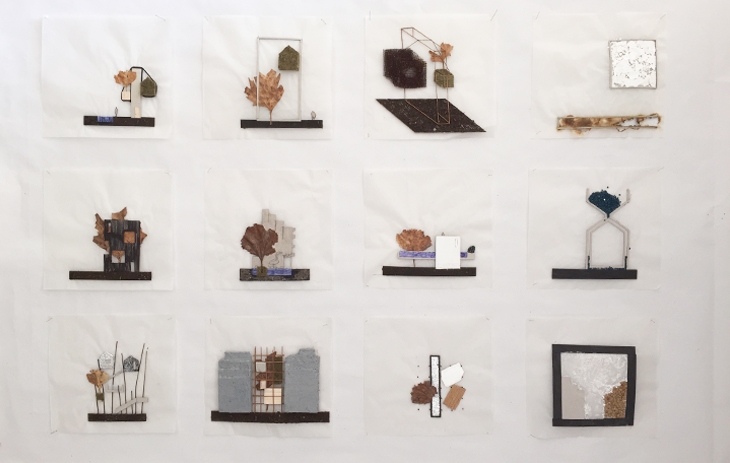 SKETCHES / CRISIS QUESTION
SKETCHES / CRISIS QUESTION DETAIL 2 / CRISIS QUESTION
DETAIL 2 / CRISIS QUESTION DETAIL 1 / CRISIS QUESTION
DETAIL 1 / CRISIS QUESTION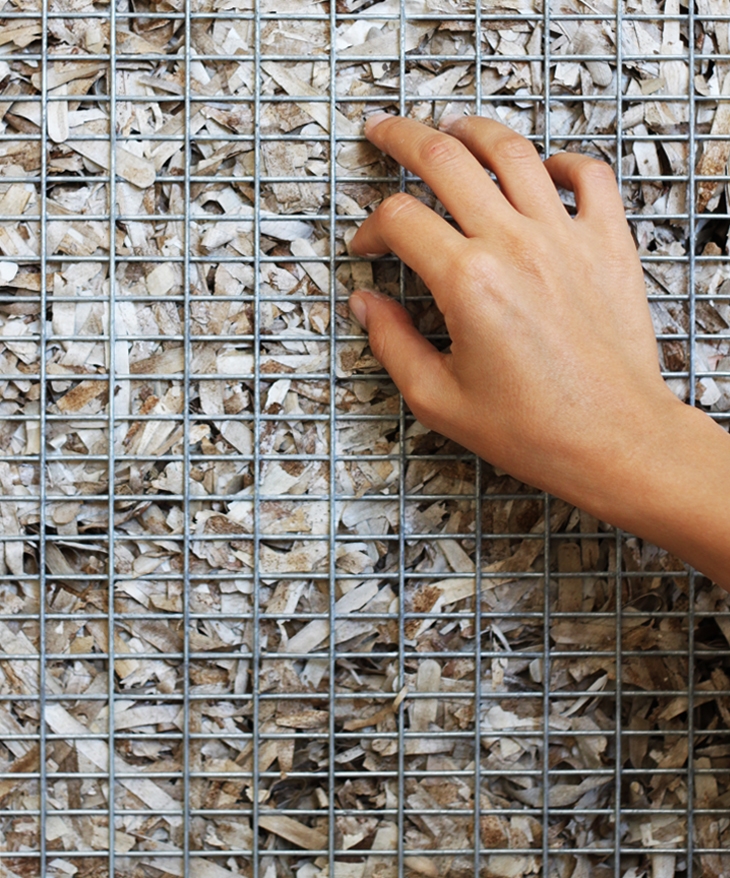 PANEL ZOOM / CRISIS QUESTION
PANEL ZOOM / CRISIS QUESTION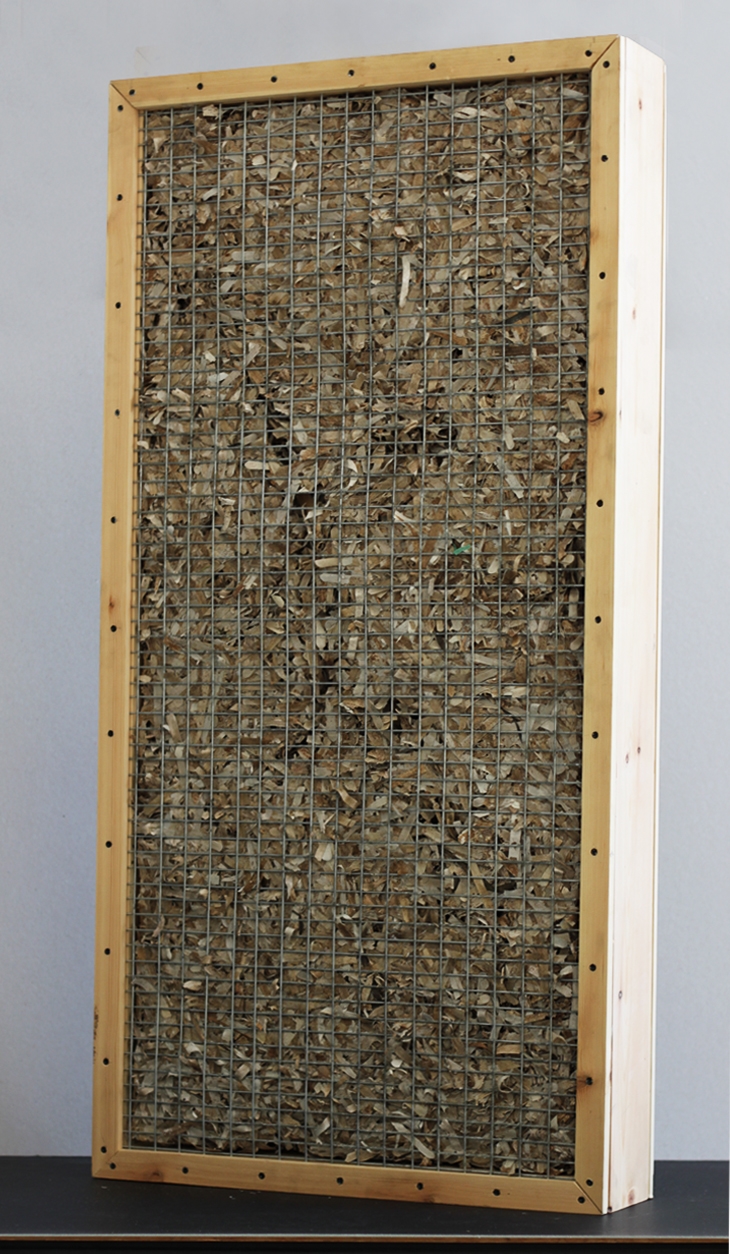 PANEL / CRISIS QUESTION
PANEL / CRISIS QUESTION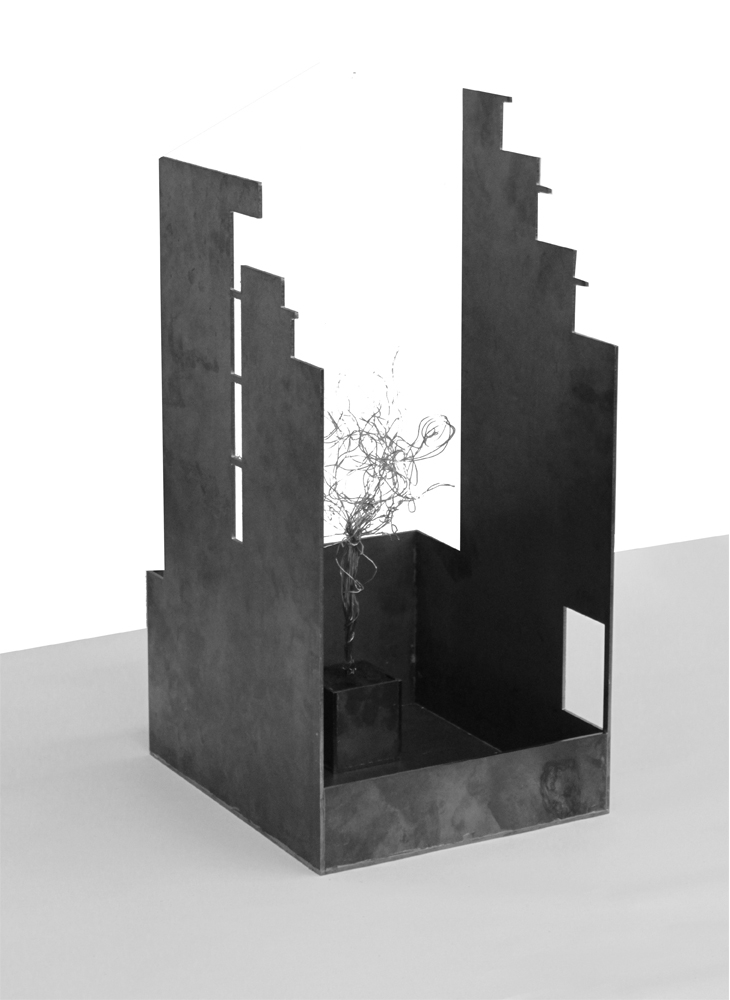 LISTED PLOT MODEL 1:50 / CRISIS QUESTION
LISTED PLOT MODEL 1:50 / CRISIS QUESTION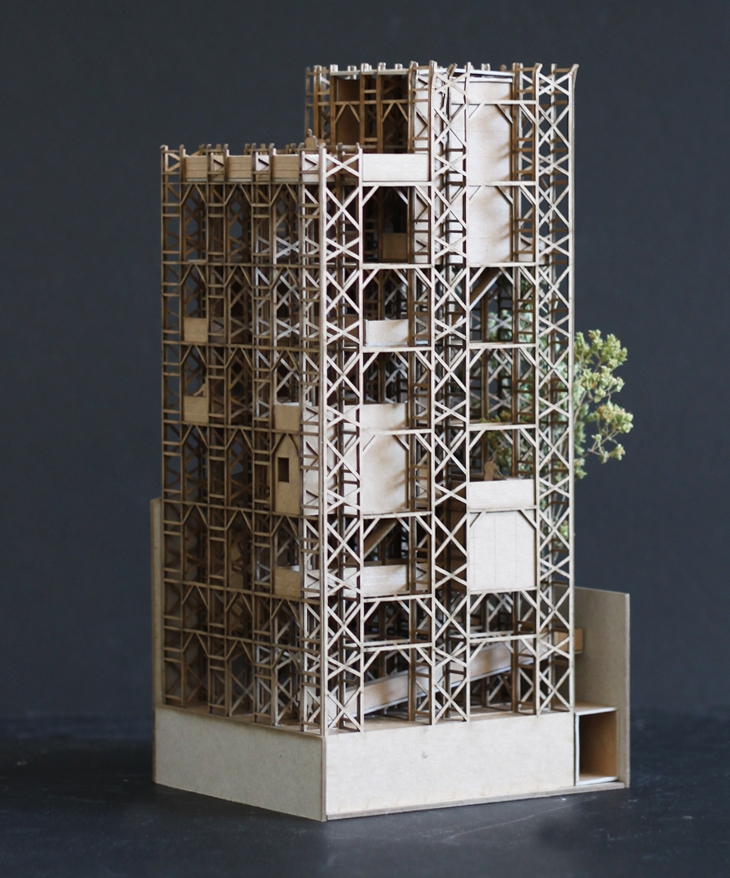 PROPOSAL 4 / SCAFFOLDING MODEL / CRISIS QUESTION
PROPOSAL 4 / SCAFFOLDING MODEL / CRISIS QUESTION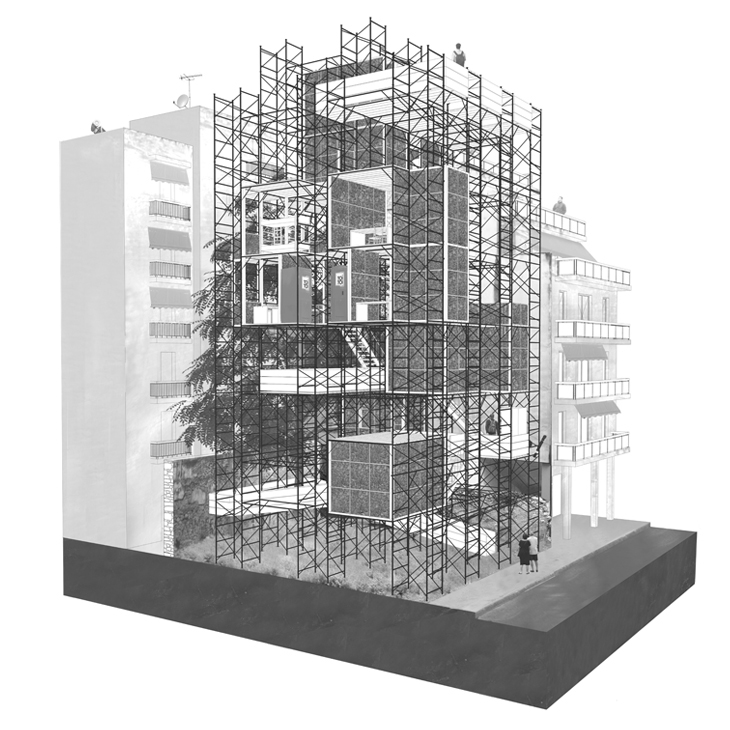 PROPOSAL 4 / SCAFFOLDING / CRISIS QUESTION
PROPOSAL 4 / SCAFFOLDING / CRISIS QUESTION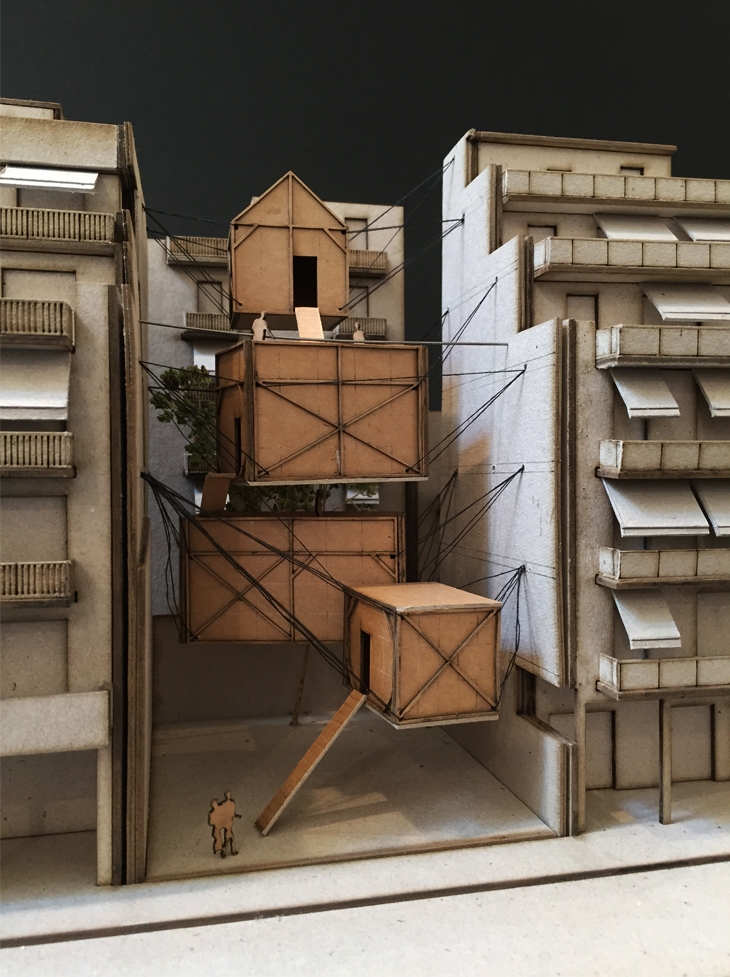 HANGING STRUCTURE MODEL / CRISIS QUESTION
HANGING STRUCTURE MODEL / CRISIS QUESTION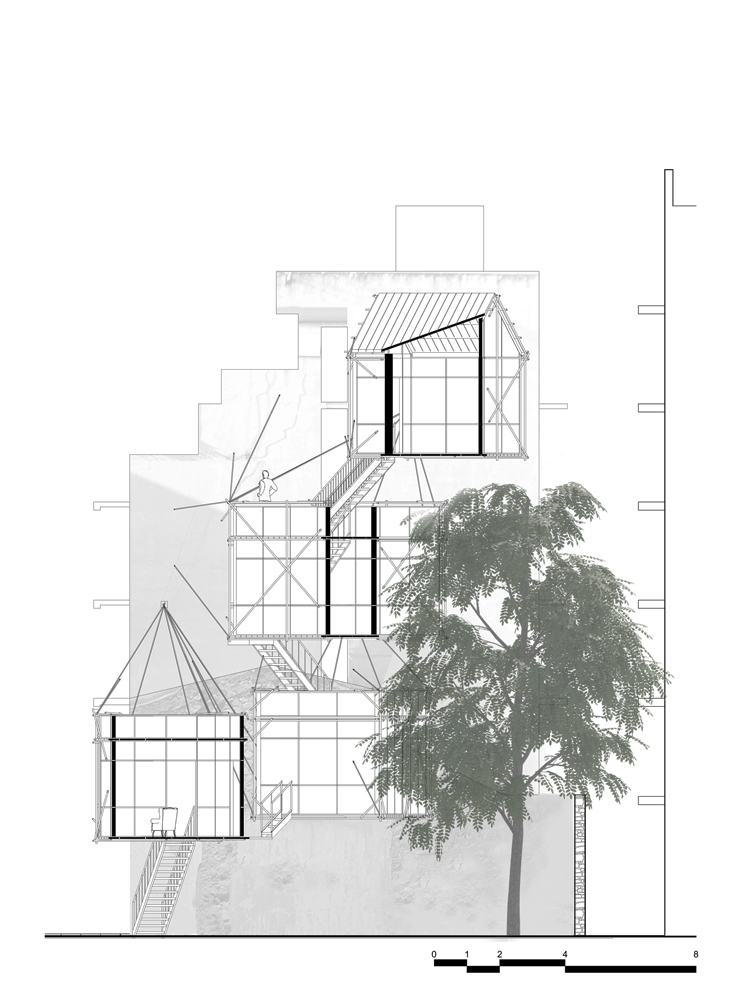 PROPOSAL 3 / HANGING STRUCTURE / SECTION / CRISIS QUESTION
PROPOSAL 3 / HANGING STRUCTURE / SECTION / CRISIS QUESTION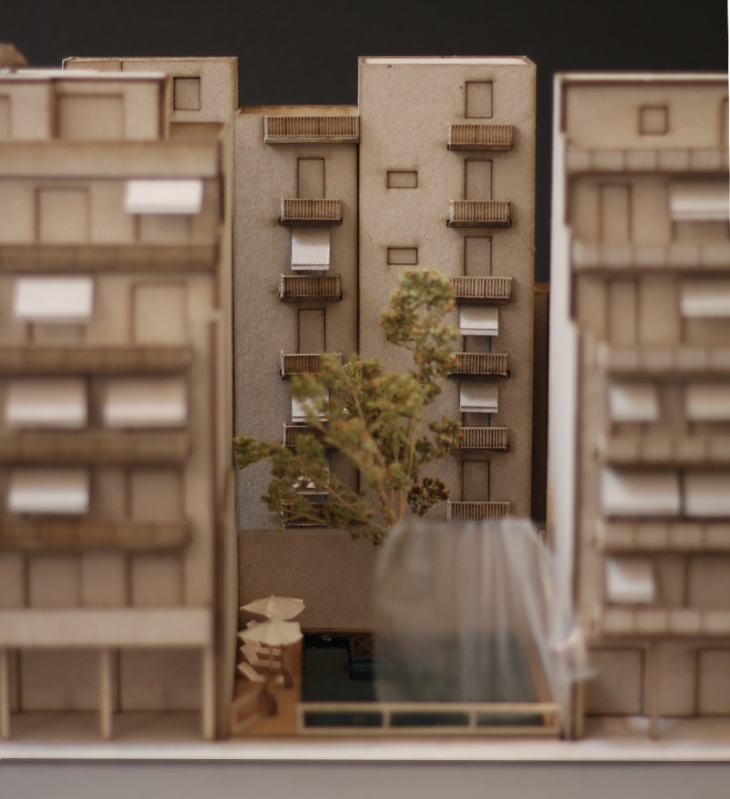 PROPOSAL 2 / PUBLIC POOL MODEL 2 / CRISIS QUESTION
PROPOSAL 2 / PUBLIC POOL MODEL 2 / CRISIS QUESTION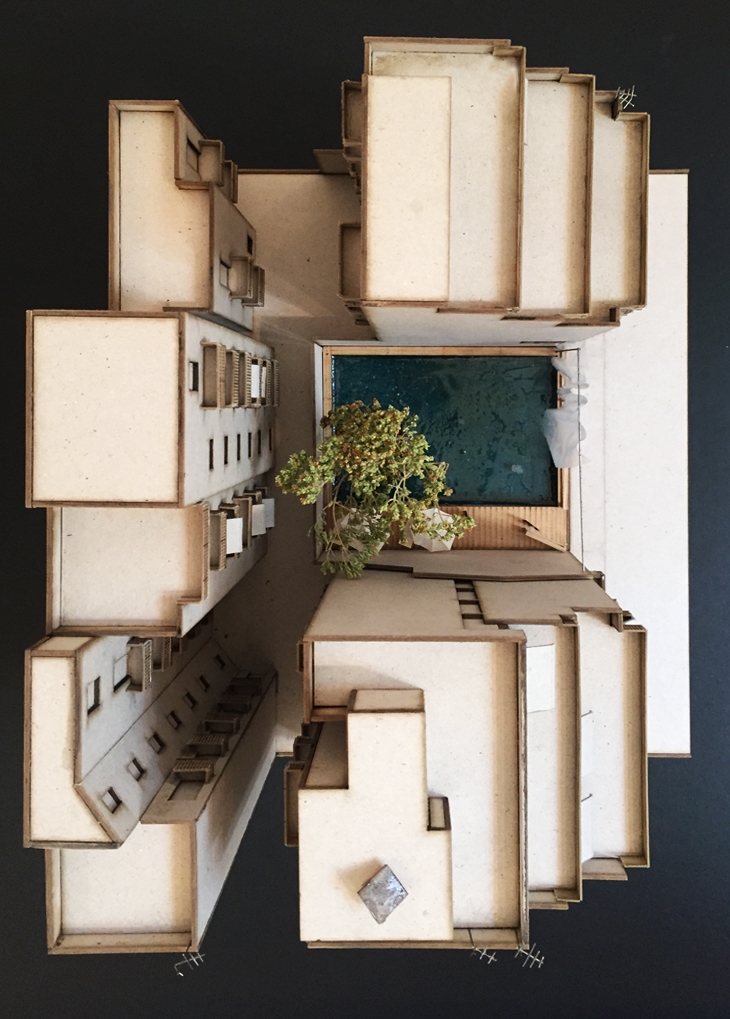 PROPOSAL 2 / PUBLIC POOL MODEL / CRISIS QUESTION
PROPOSAL 2 / PUBLIC POOL MODEL / CRISIS QUESTION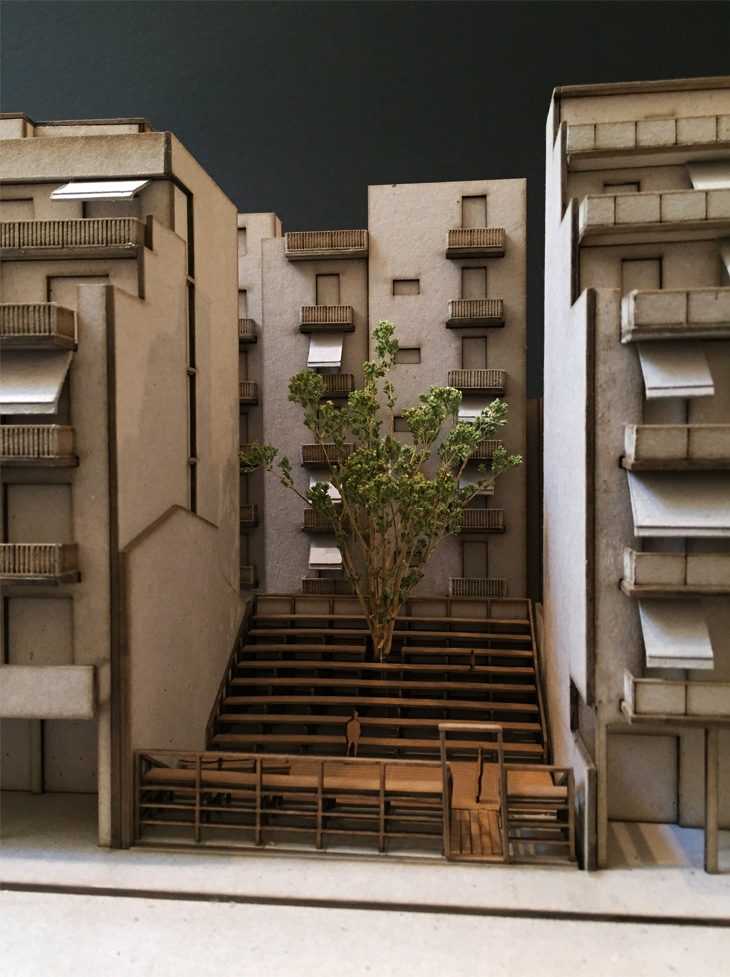 AMPITHEATRE MODEL / CRISIS QUESTION
AMPITHEATRE MODEL / CRISIS QUESTION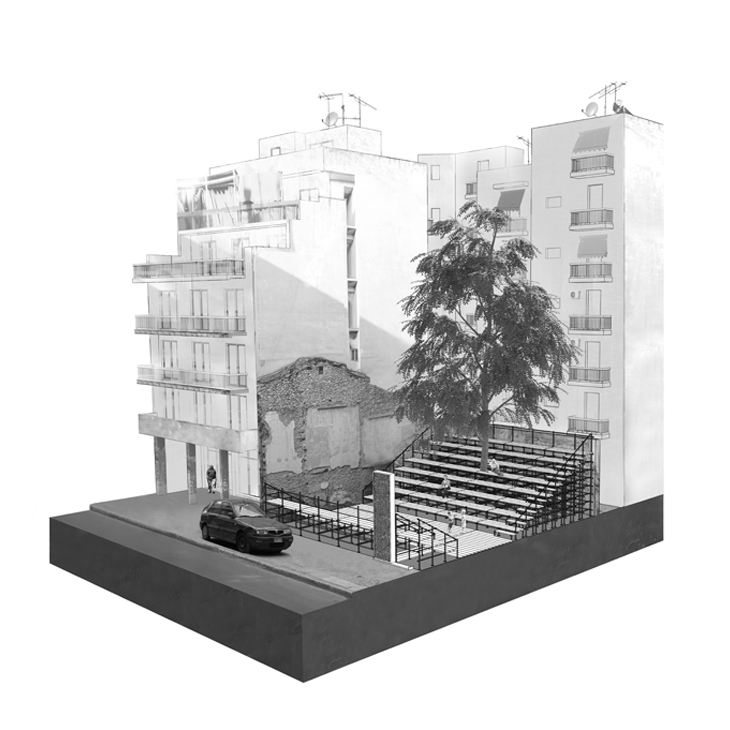 PROPOSAL 1 / AMPHITHEATRE / CRISIS QUESTION
PROPOSAL 1 / AMPHITHEATRE / CRISIS QUESTION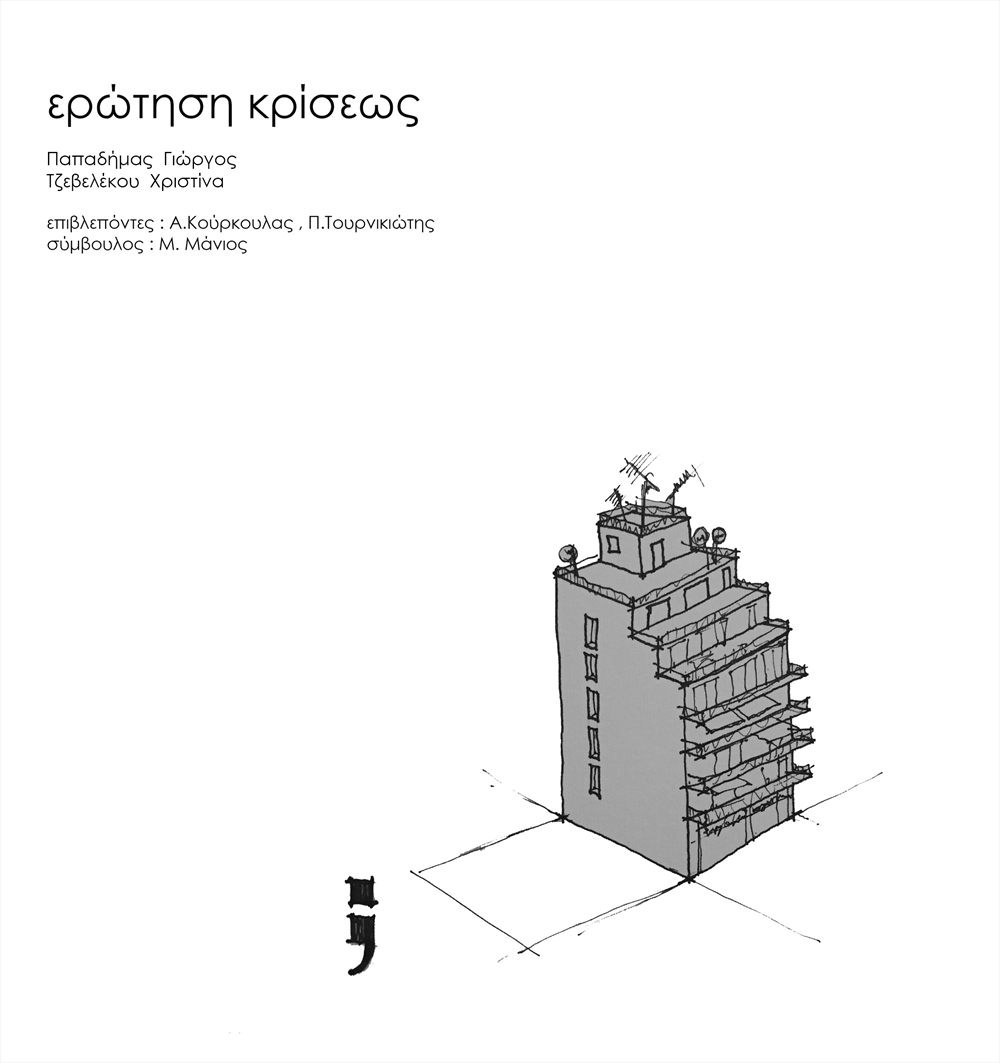 COVER / CRISIS QUESTION
COVER / CRISIS QUESTIONREAD ALSO: FISHING IN THE CONCRETE / DESIGN THESIS BY SYMEON BANOS & DEMETRA VOGIATZAKI